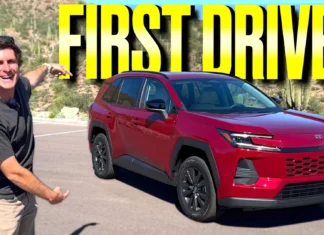
- Ford previously announced it would drop AM radio support from its EVs and gas-powered models, including the 2024 Mustang.
- After a pressure campaign from AM listeners, owners and politicians, the automaker reversed course and said it would include AM radio for the forseeable future.
- CEO Jim Farley said the company would add back AM radio to vehicles that had the functionality deleted through a software update.
Ford will no longer ditch AM radio functionality in its new vehicles, at least for the time being.
Last week, Ford Motor Company noted it would stop providing AM radio in its new cars. After major public outcry among owners, AM listeners and lawmakers alike, CEO Jim Farley announced the automaker would reverse course on that decision, keeping that functionality in Ford and Lincoln vehicles for the 2024 model year and beyond.
For vehicles that already had the feature deleted, he went on, the company will reimplement AM radio capability through a software update.
Lawmakers within the U.S. Senate and House of Representatives introduced the AM for Every Vehicle Act in the days after wall-to-wall coverage of automakers’ omission of AM radio functionality in their new models. If passed and signed into law, the bill would bar automakers from eliminating the AM band, which several parties argue compromises the government’s ability to provide public safety information (like details of natural disasters) effectively. On the other hand, detractors to keeping AM radio around say public officials and stations can get the same information out to listeners through other means, like FM radio or streaming.
Now, Ford deciding to reverse course will have an immediate impact, particularly in the 2024 Mustang. It was the first model set to drop AM functionality lock, stock and barrel. However, that will no longer be the case. For EVs that already lost the functionality, including the F-150 Lightning and Mach-E, it’s unclear exactly when the company will provide AM radio back to customers through a software update.
Ford’s business units are making moves to cut costs, boost quality and offer more software solutions
Today’s feature decision, while minor to several owners, is indeed timely as Ford aims to reinvent itself in the coming years. Apart from splitting its core business into three entities — Ford Blue for internal combustion vehicles, Ford Model e for electric vehicles and software and Ford Pro for commercial fleets — Farley also emphasized Ford’s ambitions to cut costs, boost build quality and provide better software services.
In addressing shareholders and the media, he said the company will compete at a different level, instead of “jockeying for slivers of market share”. That means backing out of some saturated market segments like smaller two-row SUVs and reducing complexity to drive greater profit margins. He said that will not translate to reductions in factory staff, engineers or office workers, though we’ll have to wait and see how Ford performs in upcoming quarters.
As part of its “tailored experiences”, the company noted a move to non-negotiated vehicle prices. That would be a popular move in light of egregious market adjustments. Though, like the course reversal on AM radio, Ford’s ability to generate mind share and win over customers will depend on the follow-through. We’ll keep an eye on all these developments and report on what happens in the coming weeks and months.























